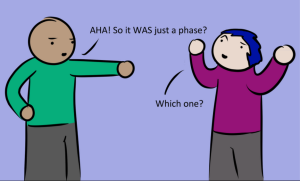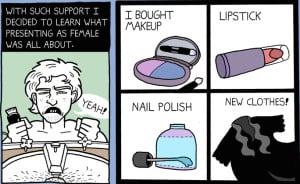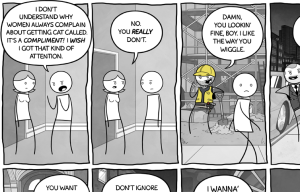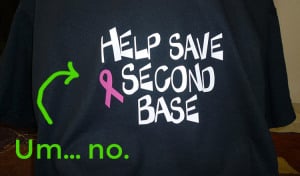
A close up of a person’s hand holding a Benefit Security card with a US flag. Source: CBS Charlotte
Angry Americans have a lot to say about welfare.
Some of it’s questionable, most of it’s derogatory, and almost all of it is incorrect.
There are millions of people who currently receive government assistance in our country. To some Americans, this rings alarm bells.
But how much do they really know about what welfare actually is, or about the people who need it?
First of all, many people would be surprised to discover that there is no one program called “welfare.”
The word “welfare” refers to a number of different government assistance programs that provide help to Americans struggling with poverty in distinct ways. SNAP/food stamps, unemployment insurance, Medicaid, Temporary Assistance for Need Families (TANF), Women, Infants and Children (WIC), tax credits for working families, and Social Security are just a few programs under the welfare umbrella.
Despite how commonly used these programs are, most people are unaware of how their daily lives are affected by government assistance.
In fact, many people who complain the most about the “evils” of welfare are actually receiving it themselves – in some form or another. They just don’t realize it, because they don’t know what welfare really entails.
Confusion about welfare is not a new thing. Stereotypes about recipients have played a crucial part in politics and propaganda for decades, fueled by class warfare and racist ideology. And the only real way to get folks to stop spreading misinformation is to educate them.
Let’s take a look at some of the most popular welfare stereotypes and discover just how wrong they are.
Myth #1: Welfare Payments Are Too High
In reality, welfare benefits are modest at best, despite the continual attacks by conservative politicians who try, year after year, to reduce them.
Take the Supplemental Nutrition Assistance Program (SNAP), formerly known as food stamps: The average benefit per person is $1.50 per meal.
Can you imagine trying to feed yourself adequately – not to mention healthily – on such an small amount of money?
Similar to SNAP, most other government assistance programs seek to provide only the barest minimum amount of help that an individual or family needs to survive.
Myth #2: Welfare Recipients Are Lazy
The idea that most people on welfare are able-bodied adults who are just too lazy to get a job and make an honest living is utterly false.
Most benefit programs require recipients to work in order to collect. Take Temporary Assistance for Needy Families (TANF), for example. Single parents receiving this grant must work at least 30 hours per week in order to be eligible, and two-parent families must work between 35 and 50 hours a week.
The fact is, blue-collar wages in America are simply not high enough to support workers in today’s economy. The wages paid by many large employers (including giants like Wal-Mart) are so low that their full-time employees are eligible for welfare.
You heard that right: People are working full-time to support their families, paying their fair share of taxes, but are so underpaid that they can’t get by without relying on government assistance.
This is partly due to the disturbing fact that the federal minimum wage has not been increased in over five years (despite the incessantly rising cost of living in our country) and partly due to voracious corporate greed.
And furthermore, half of all food stamp recipients are children. More than 82% of all food stamp money goes to households that include children, elderly people, or people with disabilities. These are people who legally or physically cannot work and live at the mercy of the system.
So where are all of these able-bodied lazy adults who are luxuriating off of their benefits? They are a fabrication.
Most people on welfare are hardworking, taxpaying citizens, just like the rest of us. Or they are impoverished children, elders, or folks with disabilities.
But it’s a lot easier for welfare critics to take help away from people that they imagine are lazy and deceitful, so that false image lives on.
Myth #3: Undocumented Immigrants Are All on Welfare
Nope. Absolutely not.
In fact, undocumented immigrants in the US are not eligible for any benefits except emergency Medicaid (in the case that they are severely injured or sick).
According to the Social Security Administration, about half to three-quarters of undocumented immigrants pay federal, state, and local taxes, including billions in Social Security taxes for benefits that they will never see a penny of.
Yes, their kids can attend public schools for free, but undocumented immigrants are actually contributing more to the American economy than they take away – and they have no access to food stamps or other welfare programs, despite being one of the lowest-paid groups in the nation.
Myth #4: People Use Welfare to Support Their Drug Habits
Federal government research tells us that the population of welfare receivers on drugs is basically the same as that of the American population in general – in some cases, even lower.
Recent drug testing results from individual states also prove the falseness of this widely accepted myth.
In July 2014, Tennessee began testing their welfare applicants, resulting in a whopping 1-in-800 people testing positive for illegal drugs. That’s less than 1%.
In Florida, four months of drug testing revealed that only 2.6% of applicants tested positive (in contrast, 8% of Florida’s non-welfare receiving population regularly test positive for drugs).
Research proves time and time again that mandated drug testing costs taxpayers much more money than it saves. And since welfare naysayers never get the results that they want from the tests, you would think they would give up with this tired tactic already. Plus, myths about people who do use drugs are terribly misguided and harmful.
Myth #5: The ‘Welfare Queen’ Is Hoodwinking Us All
Ronald Reagan once made a speech in which he claimed “There’s a woman in Chicago. She has 80 names, 30 addresses, 12 Social Security cards… She’s got Medicaid, getting food stamps, and she is collecting welfare under each of her names. Her tax-free cash income alone is over $150,000.″
“Who is this woman and how dare she steal the money of innocent, hardworking people?” cried the voices of people across the nation.
Thus was born the infamous and still widely discussed “Welfare Queen.”
She stands for all welfare recipients that are (supposedly) lazily drinking the day away, popping out babies in order to “rake in” more welfare money, and fooling the system by getting more than their share of benefits and then using them to buy iPhones and lobster dinners.
Oh, and she’s obviously Black. Although Reagan didn’t specifically mention her race, he played upon white America’s racial fears to ensure that people assumed she was Black.
What’s more, she is the perfect scapegoat for us to blame for the problems of our nation, the perfect reason to not feel bad about voting for politicians who want to cut meager welfare benefits to struggling families.
There’s just one catch.
She doesn’t exist. Good old President Reagan made her up.
What’s much more important than the falsehood of that single example is the fact that this stereotype doesn’t hold up in general. As we’ve already discovered, most welfare recipients are people just like us – hard workers struggling to support themselves and their families in the wake of the Great Recession.
My advice? Speak out when people bring up the tired Welfare Queen and her 12 babies. A future in which people don’t begrudge struggling families their humble benefits based on a racist myth is possible.
Spread knowledge and knowledge will overcome.
Myth #6: Welfare Is Not Effective
Government assistance is extremely effective at helping people get out of – and stay out of – poverty.
Conservative groups like the Cato Institute try to convince the public that because of increasing demand for programs such as food stamps, welfare has failed. In fact, the economic damage done by the Great Recession is the cause of rising food stamp participants.
The question we should be asking is, where would we be without these programs?
Well, in 2013, for example:
- Food stamps helped lessen the burden of poverty for 4.8 million people.
- The Earned Income Tax Credit and the Child Tax Credit kept 8 million hardworking families from falling under the poverty line.
- If Social Security didn’t exist, 27 million more people would be poor.
And that’s just the tip of the iceberg.
Every year, Census Bureau data proves that welfare programs are instrumental in helping people get back on their feet – and quickly.
This is exactly why these programs are necessary. And precisely why cutting their funding doesn’t make any sense.
In contrast, increasing funding to welfare programs would help alleviate poverty to an even greater extent, which would in turn help the economy grow and protect the middle class.
This brings us to the greatest myth of all – the myth that you or I will never, under no circumstance, need government assistance.
Myth #7: You’ll Never Need Welfare
Welfare, in some form, touches most people at some point during their life.
Maybe it was that few months of unemployment benefits that the war vet received when she was laid off. Maybe it was childcare resources that saved the single dad’s ass when he needed to go to work and leave the kids at home. Or perhaps it was the tax credits that got that working family through their roughest time.
No one can truthfully know that life will not throw them a curveball that severely impacts their financial situation. It’s crucial to understand that many of the welfare recipients people pity – or disdain – started out in a much more stable position.
And no matter what our current circumstances are, things change. Wealth, health, and good luck do not always last. Not one of us can know for sure that we won’t need to rely on welfare at some point in our lives.
Realizing this is just one important step towards cultivating empathy for those who are less fortunate than us.
***
Providing a safety net through government assistance makes our country stronger – and it’s time for Americans to stop spreading untrue and damaging rumors decrying the very programs that are creating a brighter future for our nation’s most vulnerable. It’s time for politicians to stop trying to cut meager benefits to struggling families.
Because there are millions of people out there who truly need these programs to help them get back on their feet. And you never know – someday, you might be one of them.
[do_widget id=”text-101″]
Danica Johnson is a Contributing Writer at Everyday Feminism and the Communications Manager at the Coalition on Human Needs, an alliance of national organizations working together to promote public policies addressing the needs of low-income and other vulnerable populations. Living in Washington, DC, this West Coast native uses her free time to write for her blog Duckyfem, practice yoga and spend as much time with animals and in nature as possible. Follow her on Twitter @duckyfem and read her articles here.
Search our 3000+ articles!
Read our articles about:
Our online racial justice training
Used by hundreds of universities, non-profits, and businesses.
Click to learn more




















